Created by Lossa Engineering, a Custom motorcycle manufacturer based in Long Beach, California, the 1966 Honda CB160 Poco Bastardo replica takes us back to a time of two-wheeled motoring when simplicity of design was all that one looked for in their motorbikes.
With stunningly seamless curves, the Poco Bastardo (’Little Bastard’ in Italian’) comes with a stage 2 port job, a 3mm over big bore kit, an electric starter and modern style tires that are a size larger from the standard stock rubber.Painted in 2 stages in Orion Silver in House of Kolor paint, the bike features control cables custom shortened to maintain the design’s authenticity with Chrome Lossa cafe bars and Hagon Racing shocks finishing off the classic look.
–
Fitted with custom rear sets, the replica features an H1 steering stabilizer with a dry cell battery mated to a modern rectifier since the bike was wired from scratch.
To give the bike a classic ‘60’s feel, the replica was fitted with leather upholstery on the cafe seat that complements the bobbed front fender and the gold chain while the brass screens on the brake feature a cooling drilled front hub with chrome hoops finishing off the polished hubs. The 1966 Honda CB160 Poco Bastardo replica also boasts of a Keihin 24mm Carburetors, K&N; pod filters, black coated ceramic Lossa reverse cone mufflers on the custom exhaust and polished engine covers that add touch panache to the classic ride.
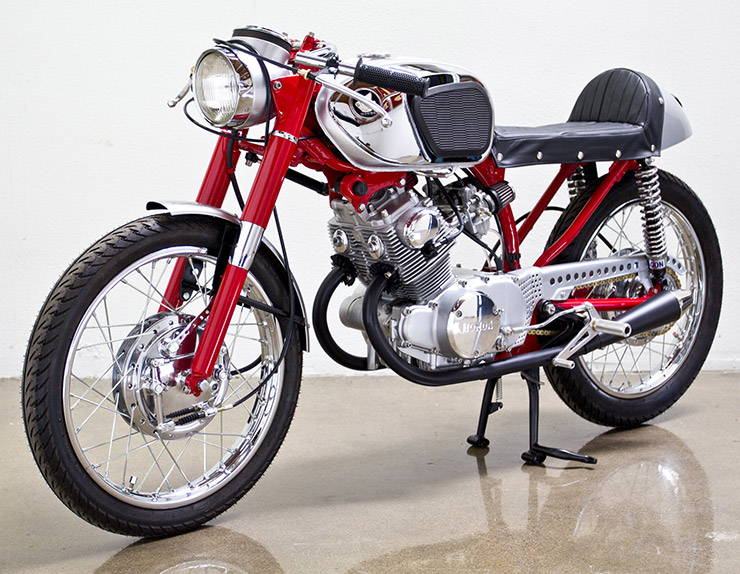
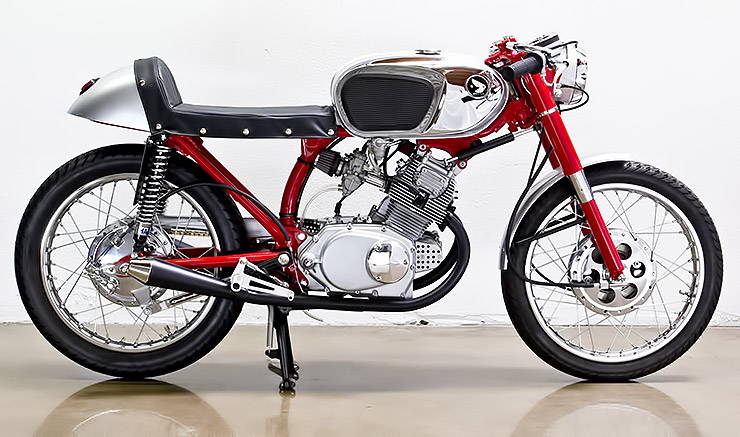
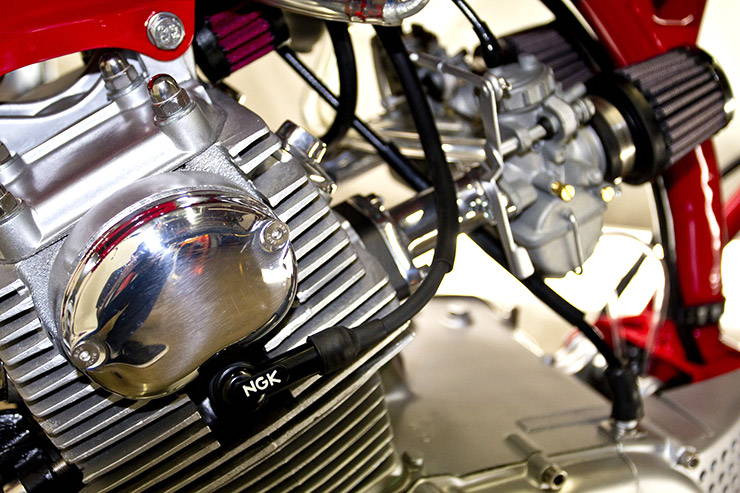

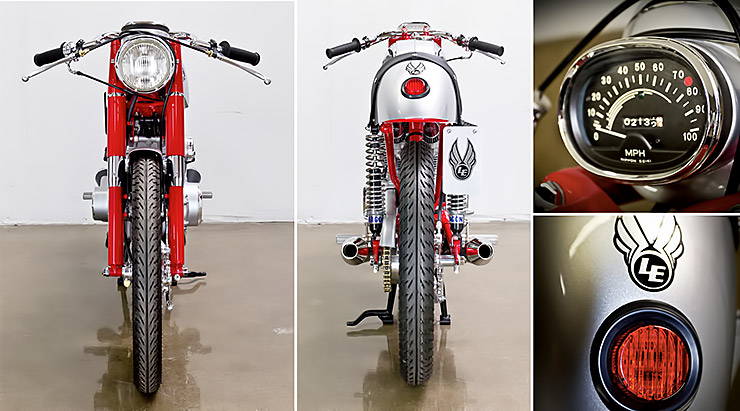



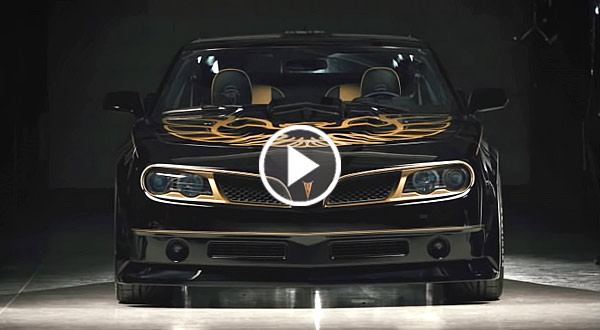







Facebook Comments